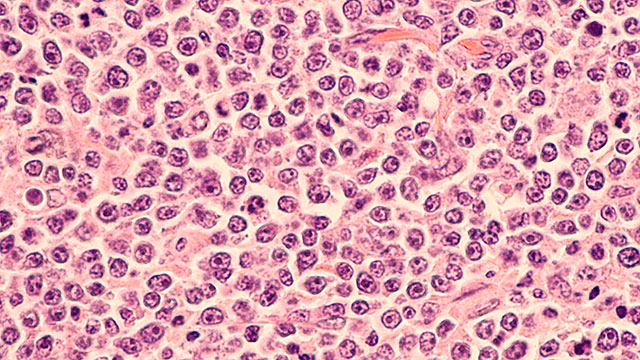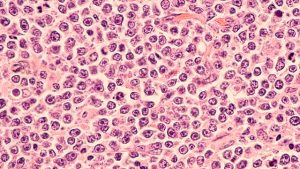
Lymphoma – causes, side effects and treatments at NaturalPedia.com
Wednesday, May 09, 2018 by Janine Acero
http://www.naturalpedia.com/lymphoma-causes-side-effects-and-treatments-at-naturalpedia-com.html

Lymphoma is a type of cancer that starts in the lymphocytes (white blood cells). It is a solid tumor of lymphoid cells and can develop in the lymph nodes, spleen, bone marrow, blood, or other organs.
Lymphoma is one of the most common causes of cancer in children and young adults aged 15 to 24 years, although it can generally occur at any age.
There are two major types of lymphomas, the Hodgkin disease and non-Hodgkin’s lymphoma (NHL). NHL is the most common and is divided into low-grade, intermediate-grade, high-grade, and miscellaneous lymphomas.
In Hodgkin disease, the cancer usually affects one lymph node after another, in order, while in NHL, tumors may arise in disparate lymph nodes, skipping some nodes.

Known symptoms and risk factors for lymphoma
Lymphoma is a cancer of the lymphatic system. The most common symptom is usually an enlargement of lymph nodes or lumps which are painless to the touch, which makes it the most overlooked symptom of this condition. Most patients tend to ignore the symptom as it doesn’t involve any pain, and think they are just fine. This may be true most of the time, but it isn’t true when it comes to lymphoma.
Other common warning signs include:
- Breathlessness – Lymphoma patients commonly complain about feeling out of breath. As the lymph nodes enlarge, they affect the patient’s respiratory system, preventing them from drawing full, normal breaths. Related symptoms include sharp, recurrent chest pains and a constant cough which seems to have no external cause. These symptoms are much more severe in smokers than non-smokers.
- Fever – People with lymphoma typically experience symptoms relating to body temperature, including recurrent bouts of fever.
- Hyperhidrosis – Excessive sweating (hyperhidrosis) frequently occurs in lymphoma patients. Patients typically sweat a great deal during the night.
- Irritated skin – As lymphoma cells develop and mature, they secrete chemical byproducts which can cause skin symptoms, such as small, acne-like lesions (papules), which appear in clusters. Most papule clusters develop in parts of the body most immediately and heavily affected by the lymphoma malignancy.
- Pain – A minority of patients experience severe, even debilitating pain as malignancies develop in localized areas of the body. Pain symptoms occur most often in cases where the lymphoma is affecting one or more organs. For example, lymphoma of the brain may cause severe migraine headaches, while those suffering from lymphoma of the stomach may get severe abdominal cramps.
- Swelling – You may experience swelling of the face, chest, or neck. Lymphoma also commonly affects the stomach and intestines, which can also trigger swelling. This may cause a feeling of built-up pressure or pain. Patients may also experience abnormalities in their bowel movements and digestion, including diarrhea and loss of appetite.
Body systems harmed by lymphoma
Lymphatic tissue is connected throughout the body. If cancer cells develop in the lymphatic system, it can spread easily from their original location to other tissues and organs.
Lymphoma most often spreads to the liver, bone marrow, or lungs.
Food items or nutrients that may prevent lymphoma
There is no definitive way to prevent lymphoma, but survival rates after treatment are positive. There are also foods that can help reduce the incidence of lymphoma, such as:
- Eating plenty of leafy greens such as spinach, kale, broccoli and Brussels sprouts, and other vegetables may help reduce the incidence of NHL.
- Drinking clean water is essential for overall health, which includes the lymphatic system. Water flushes out toxins and helps break down protein, salts, carbohydrates, fats and other substances. This fights lymphoma because it normalizes the blood-manufacturing process.
- Healthy fats such as monounsaturated fats provide nutrients to develop and maintain cells in your body, while polyunsaturated fats are important for growth, development and brain function. Fish oils are excellent sources of omega-3 fatty acids, which help regulate cardiovascular system. Examples of sources of healthy fats include sardines, walnuts, almonds, herring, halibut, macadamia nuts, mackerel, tuna, lake trout, flaxseed and salmon.
- Whole grains are rich in nutrients that are essential to strengthening the immune system, such as selenium, an essential vitamin that promotes immune system and overall body functions by aiding in blood cell production.
Treatments, management plans for lymphoma
Treatment options usually include chemo and radiation therapy, but there are effective home remedies for lymphoma, including the use of iodine, green tea extract, artemisinin, parsley, licorice, milk thistle, reishi mushrooms, sunshine exposure, omega-3 fatty acids, olive leaf extract, probiotics, and a reduction in sugar intake, stress, alcohol, and nicotine.
Lymphoma, like most health conditions, can be managed and treated with dietary changes, such as reducing sugar intake and eating more whole foods, which can slow and even reverse the progression of cancer. Likewise, taking probiotics or eating fermented food such as kefir and sauerkraut eliminates toxins in the body and boosts the immune system, which also cleanses the lymphatic system.
Most importantly, lifestyle changes such as quitting smoking will allow your body to heal faster. Smoking also weakens the immune system and increases the chances of chronic disease.
Where to learn more
- Aspartame is linked to leukemia and lymphoma in new landmark study on humans
- New research: vitamin K protects against non-Hodgkin lymphoma
- Organic Solvent Exposure Raises Non-Hodgkin Lymphoma Risk
- Vegetables, antioxidants may lower lymphoma risk (press release)
- Non-Hodgkin’s Lymphoma prevented by natural sunlight, but doctors still don’t teach it
Summary
Lymphoma is a cancer of the lymphatic system. It causes an enlargement of lymph nodes or lumps which are painless to the touch.
Lymphoma can spread to the spleen, bone marrow, blood, or other organs.
Sources include:
Tagged Under: Tags: lymphoma





